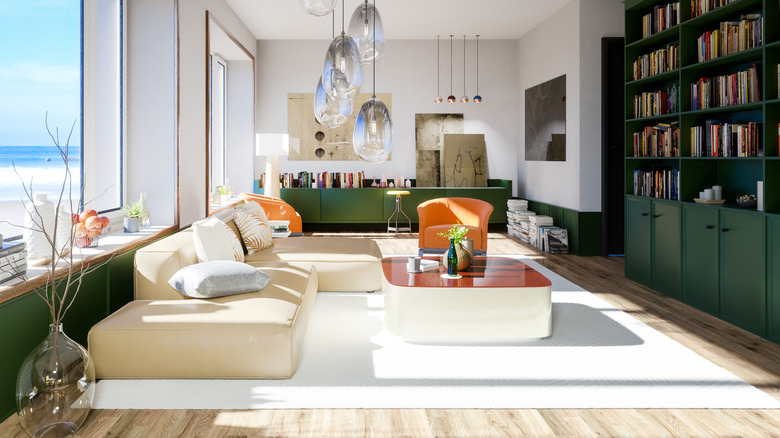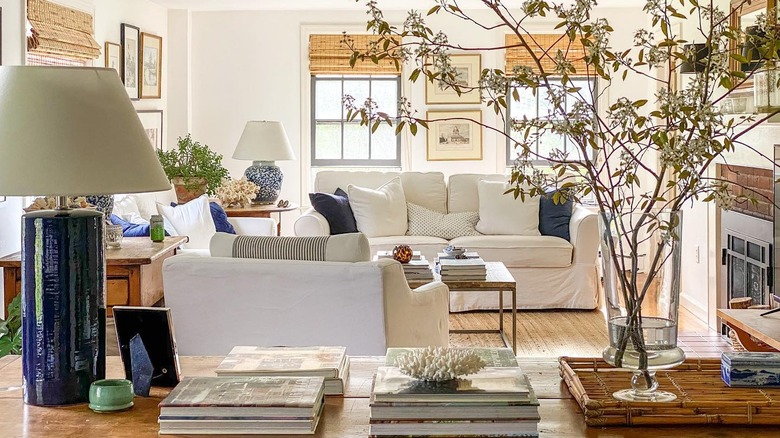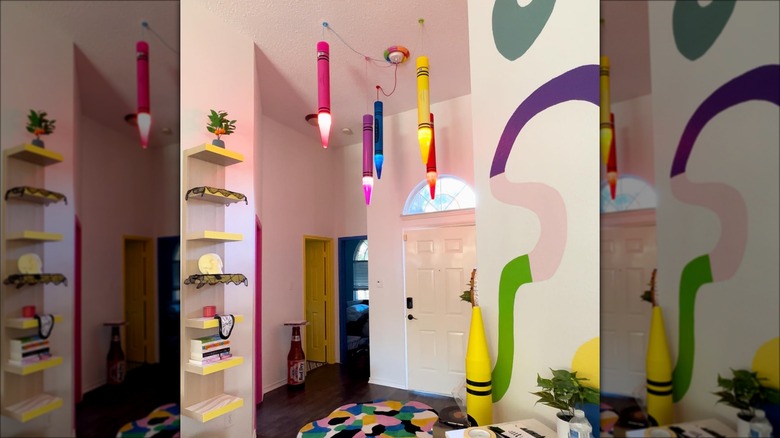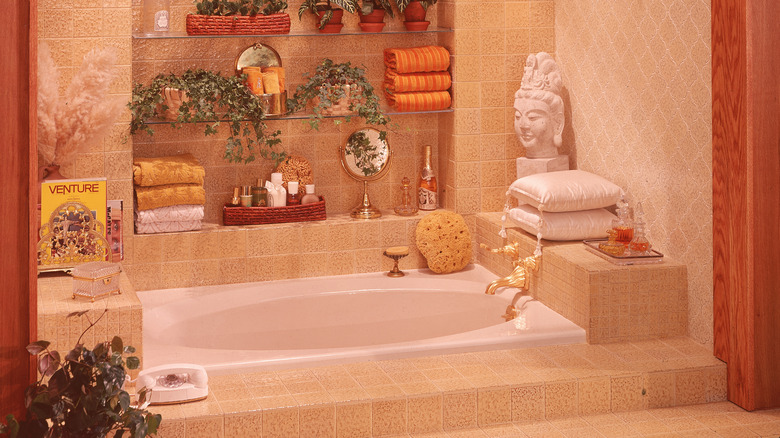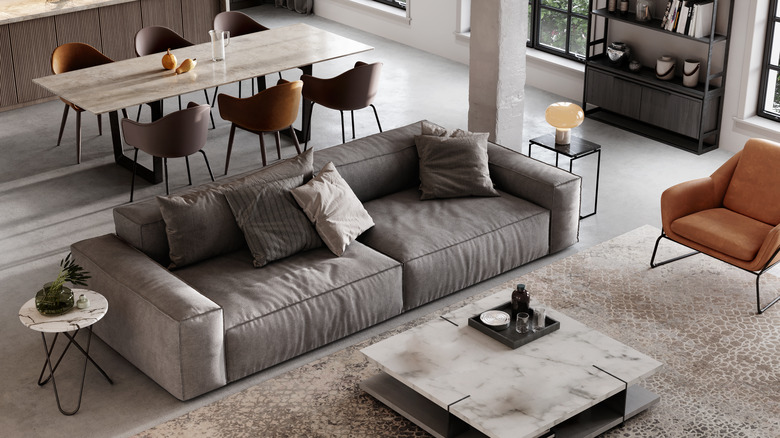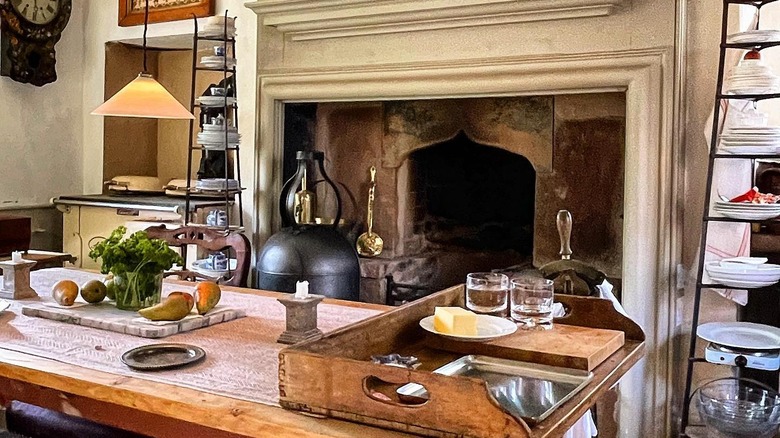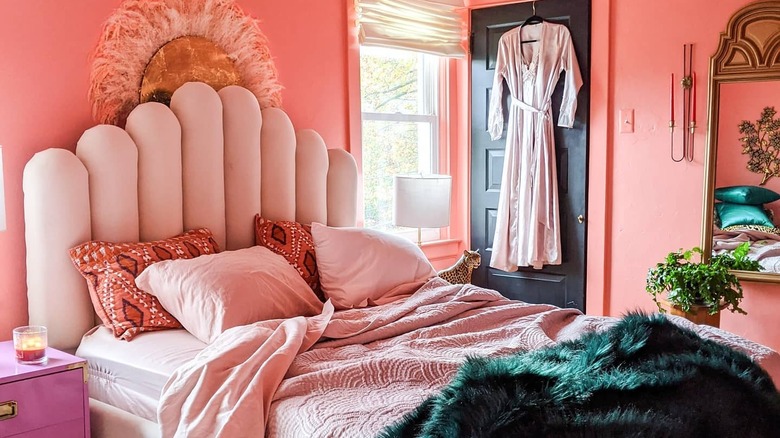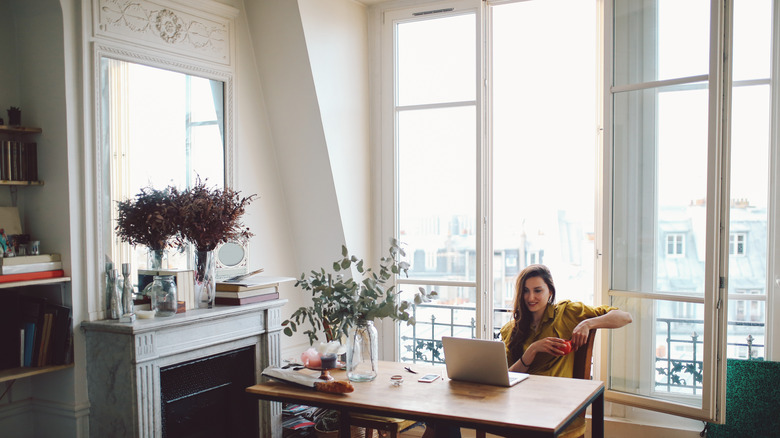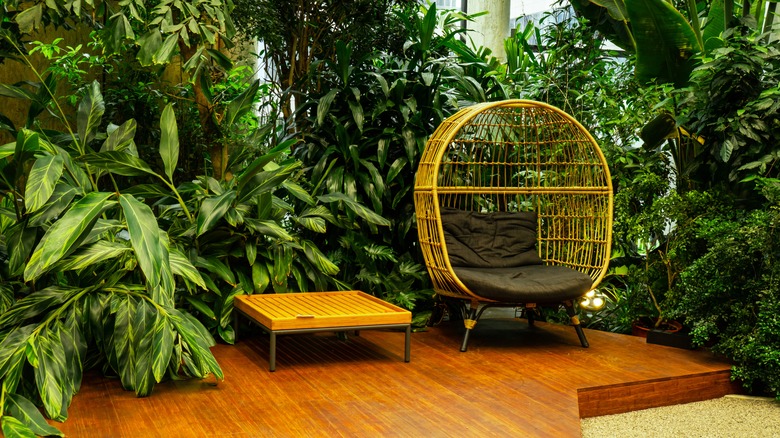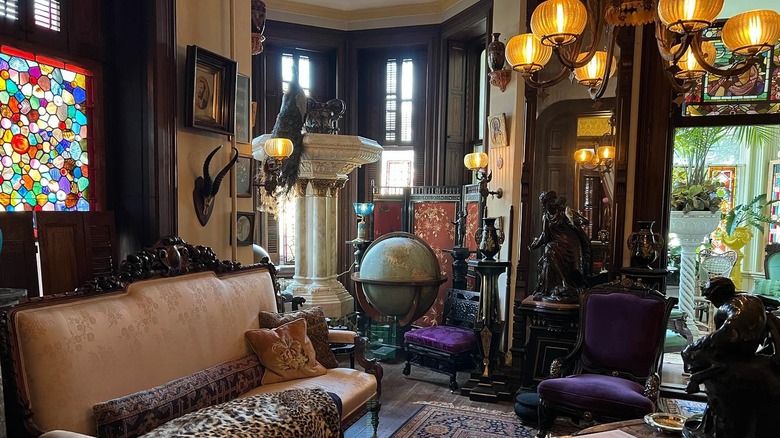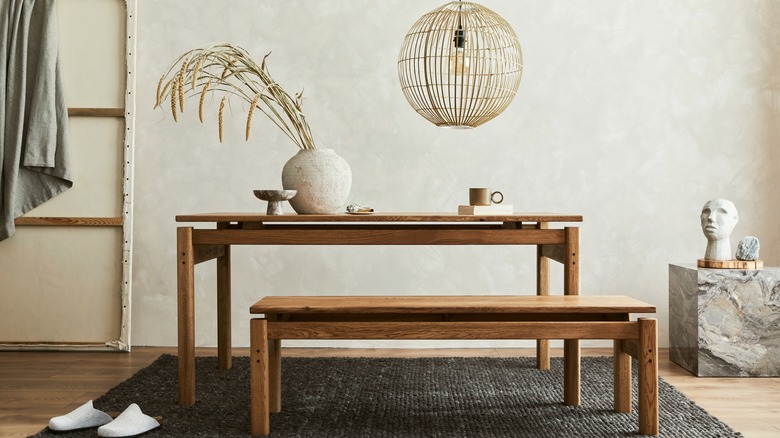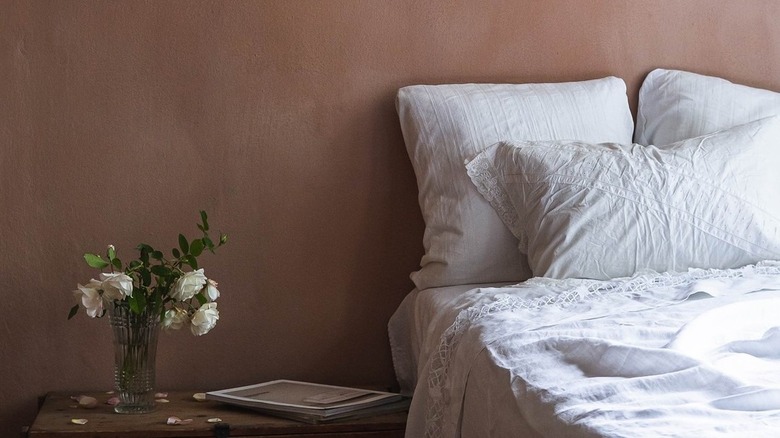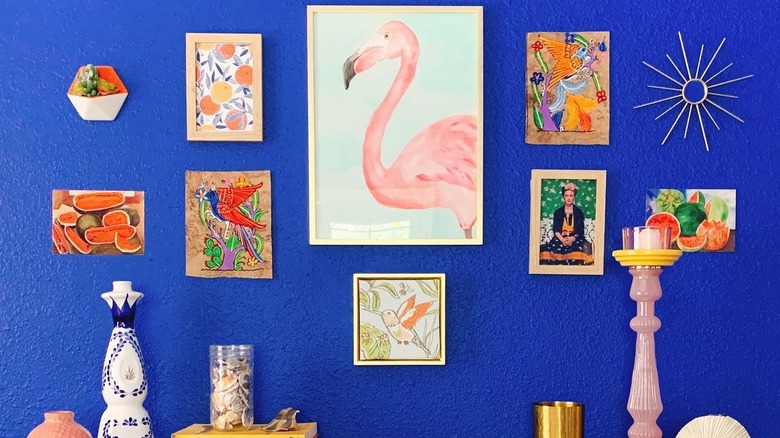12 Design Aesthetics We'd Love To See Dominate 2024 (And How To Pull Them Off)
The world of interior design is undergoing a transformative period, marked by innovative concepts, bold aesthetics, and an appreciation for retro and vintage styles. With each passing year, the design landscape evolves, reflecting societal shifts and a desire to hone our unique, personal style. In this exciting era, the upcoming interior design trends for 2024 promise to redefine the way we perceive and interact with our living spaces. From the revival of classic design elements to the more cutting-edge modern sensibilities, the interior design trends of 2024 are poised to leave an indelible mark on our homes.
What really stands out about 2024 interior design predictions is that many of them aren't terribly distinctive on their own, but borrow from many schools of design, a trend we started to see in 2023. Scandinavian decor is no longer going to look like a page out of an Ikea catalog, but contain plenty of organic textures and thrifted treasures. Spaces that previously read as straight midcentury modern may also incorporate elements from Victorian and boho design. We are looking forward to seeing these design aesthetics come through in plenty of different combinations as we all take the time to make our homes joyful, unique spaces in the new year.
1. Nancy Meyers-inspired cozy affluence
If you've ever watched a classic Nancy Meyers movie such as "It's Complicated," or "Father of the Bride," no doubt you've noticed her signature interiors that feel like a warm hug. This cozy but high-end aesthetic is the basis for the now popular coastal grandma aesthetic. You can achieve this look with thoughtful clutter like interior design coffee books, decorative trays, vases, and hinge boxes. White slip-cover sofas are also a classic, luxurious, and timeless choice for this aesthetic. Framed wall art is also essential to this look — watercolors, maps, old portraits, and even embroidered fabrics can be matted and framed for a stunning addition.
2. Postmodernist dopamine decor
No doubt you've heard the tale of dopamine decor, which seems to actually be a renaissance of the radical 80s postmodern movement that emphasized theatricality, play, and style for style's sake. Dopamine décor takes elements from this movement but combines them with a PeeWee's Playhouse-esque aesthetic that is silly but stunning. Take, for instance, this DIY light fixture by Karrin Joy on Instagram that goes with her multicolor squiggles along the walls.
3. 1980s Southeast Asian-inspired organic glam
The 80s gets a bad rap for interior design, and we get it! The carpeted bathrooms and questionable checkerboard patterns were a bit much. But it was also a time that saw some beautiful changes — drawing influences from the rich and glamorous interiors of Southeast Asia, 80s American interior design combined rich colors, satin, sculptures, and an increase in houseplants that made everyday areas feel opulent. We'd love to see this trend come back with more nuance and with a greater cultural appreciation, pulling on the gorgeous silhouettes, patterns, and natural organic touches from Southeast Asia.
4. Quiet luxury
Quiet luxury design is dedicated to creating rooms that exude opulence without resorting to ostentatious displays. Instead of busy, eye-catching colors and patterns, it focuses on quality, craftsmanship, and a sense of timelessness. Quiet luxury can be combined with other styles, like industrial, transitional, Bauhaus, and modern. In addition to investing in high-end furniture pieces, some other characteristics of quiet luxury include minimal clutter, subdued color palettes, and high-quality materials like solid wood, leather, and marble.
5. English country house
By now, the super minimalist days of American farmhouse modern are on their way out, and trends are leaning more toward rustic, lived-in cottagecore spaces. It would be great to see this trend edge to what we're calling Cotswold-core for an even more distinct, classic style. Limewashed walls, solid wood furniture, distressed gold frames on paintings, and antique decorative pieces are all essential to this style. Embroidered napkins, tablecloths, and throw pillows are also great, affordable accents. Color palettes should draw on subdued tones found in pastoral England, like stony grey, sage green, and earthy beige.
6. Modernized art deco glamor
For plenty of us, we only got to see the Roaring 20s in black and white film, which diminishes some of the glorious textures, colors, and fabrics, punctuated by silent film stars like Gloria Swanson. So it's thrilling to see this ultra-luxe style return with more vibrancy than ever. To pull the look off, look for bold colors like peachy pink and rich emerald green, as well as metallic accents. Animal print patterns, particularly leopard print, are also perfect for this style. Finally, incorporate eye-catching textures like fur, silk, and velvet.
7. Parisian romanticism
Who amongst us hasn't dreamt of dwindling our days away in a Parisian apartment, sipping red wine and eating fresh baguettes? While that isn't a likely reality for most, you can upgrade your place to feel like you're right in an arrondissement. If you have a fireplace, make it the focal point in the room (or make your own DIY faux fireplace). Hang a mirror above the mantel and decorate it with vases, books, and statuettes. Add molding to the baseboards and ceiling trim to bring that craftsman charm in. Just buy trim from your local hardware store, install it, and paint it the same color as your walls.
8. Biophilic Design
If you are a self-proclaimed plant parent, biophilic design may be the perfect interior design style for you. Biophilia is all about humans and their connection to and desire to be near the natural world. Think of it as greenhouse chic. Beyond just adding a few houseplants, biophilic design also incorporates architectural and environmental elements that are conducive to letting natural beings, both plant and person, thrive. Large windows to let plenty of light in, top-notch ventilation systems, and of course, plenty of plants. Water features, organic, imperfect silhouettes, and sustainably sourced organic materials like cork, bamboo, wood, and stone are also key to biophilic design.
9. Victorian cluttercore
Nobody loved clutter quite as much as the Victorians, who filled their parlor rooms with statues, decorative tea sets, and wall-to-wall furniture. While this style has been pushed aside by stark modern minimalism for the last few years, we'd love to see it make a comeback. To pull this look off, head to your local antique mall. Look for recreations of classic pieces such as statues and vases; taxidermied animals were also common for bookshelf décor and wall art. You can also mix patterns, fabrics, and colors with rugs, upholstered furniture, and pillows.
10. Japandi design
Did you know the interior designs of East Asia heavily influenced Scandinavian design? It's recently taken on the term "Japandi" and is being touted as a new style, but Japanese and Scandinavian interior design have long since been intertwined. Scandinavian design focuses on clean lines, a sense of openness, and natural materials. The Japanese design philosophy of "wabi-sabi" is the philosophy of finding beauty in imperfection, such as cracks in stone, wood grain that lacks uniformity, and organic, natural silhouettes in vases, artwork, and sculpture. When combined, these two design schools fuse seamlessly, creating spaces that are both cozy without being claustrophobic and clean without being cold.
11. Modernized Tuscan villa
The Tuscan villa trend died out sometime in the late aughts and has since been ridiculed as a little bit corny. But there is a way to modernize and update the Mediterranean aesthetic in a tasteful way. Limewashing walls is an easy way to replicate the texture and matte finish of stucco and can work with a ton of colors like warm peach, off-white, or cadet grey. Mix these with natural wood furnishings (bonus points if you have exposed beams!), terra cotta vases, and hand-painted tiles for a stunning, fresh take on Tuscan design.
12. Hues from Oaxaca
Few places in the world have offered the design world as much color, pattern, and beauty as Oaxaca. The craftspeople of this area produce mind-blowingly beautiful textiles, as well as painted patterned wood carvings, pottery, and more. If you love the color found in Oaxacan design, try to integrate it into your home — these bright, bold colors are particularly well suited to bright, airy rooms like the entryway, patio, or sunroom. Cobalt blue, tangerine, peach, and pink are essential colors in this palette. Buying artwork and decor accents from Oaxacan makers is the best way to make this style come together in an authentic way.
